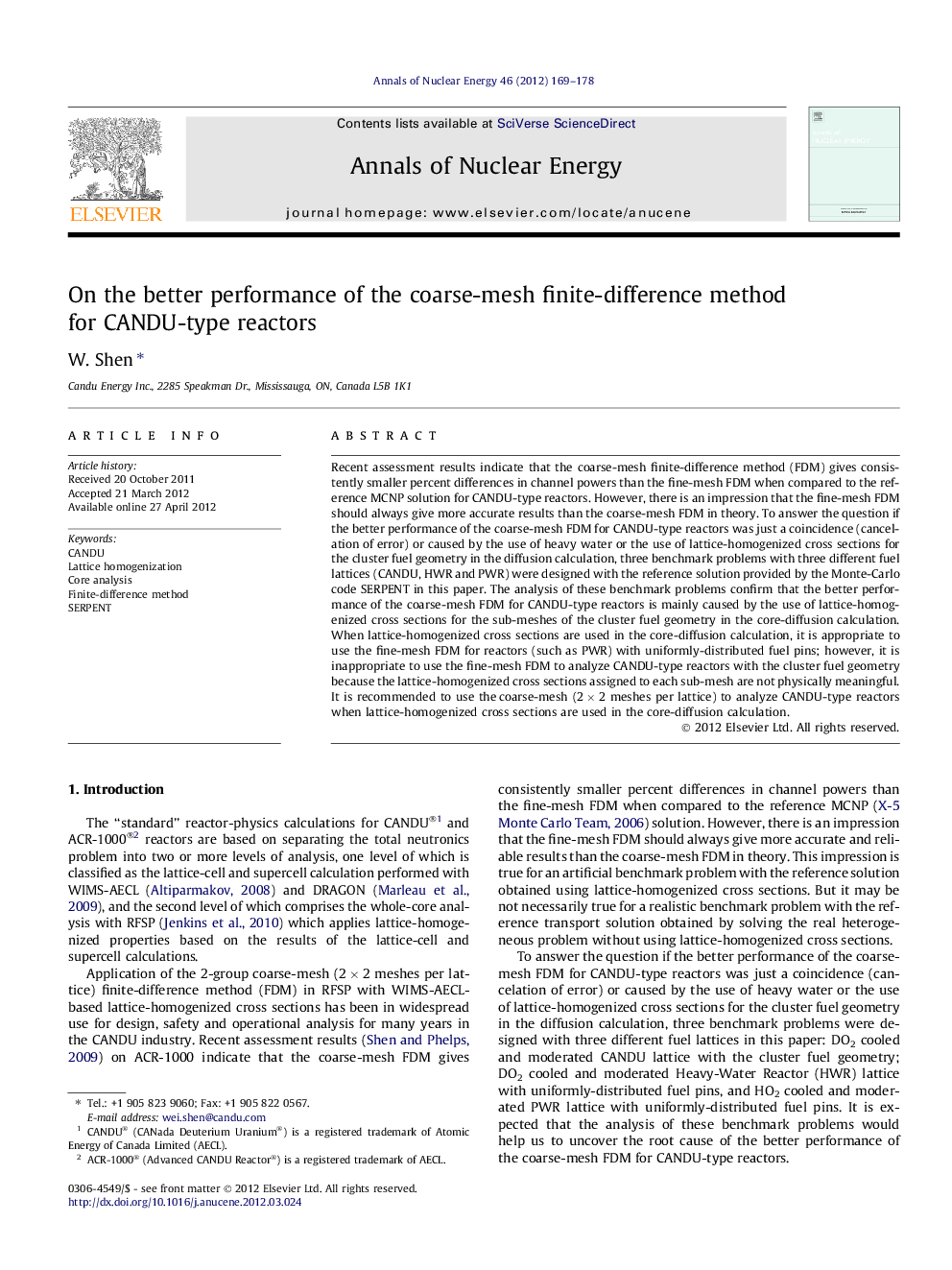| کد مقاله | کد نشریه | سال انتشار | مقاله انگلیسی | نسخه تمام متن |
|---|---|---|---|---|
| 1729018 | 1521152 | 2012 | 10 صفحه PDF | دانلود رایگان |

Recent assessment results indicate that the coarse-mesh finite-difference method (FDM) gives consistently smaller percent differences in channel powers than the fine-mesh FDM when compared to the reference MCNP solution for CANDU-type reactors. However, there is an impression that the fine-mesh FDM should always give more accurate results than the coarse-mesh FDM in theory. To answer the question if the better performance of the coarse-mesh FDM for CANDU-type reactors was just a coincidence (cancelation of error) or caused by the use of heavy water or the use of lattice-homogenized cross sections for the cluster fuel geometry in the diffusion calculation, three benchmark problems with three different fuel lattices (CANDU, HWR and PWR) were designed with the reference solution provided by the Monte-Carlo code SERPENT in this paper. The analysis of these benchmark problems confirm that the better performance of the coarse-mesh FDM for CANDU-type reactors is mainly caused by the use of lattice-homogenized cross sections for the sub-meshes of the cluster fuel geometry in the core-diffusion calculation. When lattice-homogenized cross sections are used in the core-diffusion calculation, it is appropriate to use the fine-mesh FDM for reactors (such as PWR) with uniformly-distributed fuel pins; however, it is inappropriate to use the fine-mesh FDM to analyze CANDU-type reactors with the cluster fuel geometry because the lattice-homogenized cross sections assigned to each sub-mesh are not physically meaningful. It is recommended to use the coarse-mesh (2 × 2 meshes per lattice) to analyze CANDU-type reactors when lattice-homogenized cross sections are used in the core-diffusion calculation.
► We set up three different benchmarks with the reference solutions computed by SERPENT.
► We analyzed the root cause of the better performance of the CMFD method for CANDU.
► It is inappropriate to use the fine-mesh FDM to analyze CANDU with the cluster fuel.
► We recommend using the CMFD method with homogenized properties for CANDU.
Journal: Annals of Nuclear Energy - Volume 46, August 2012, Pages 169–178